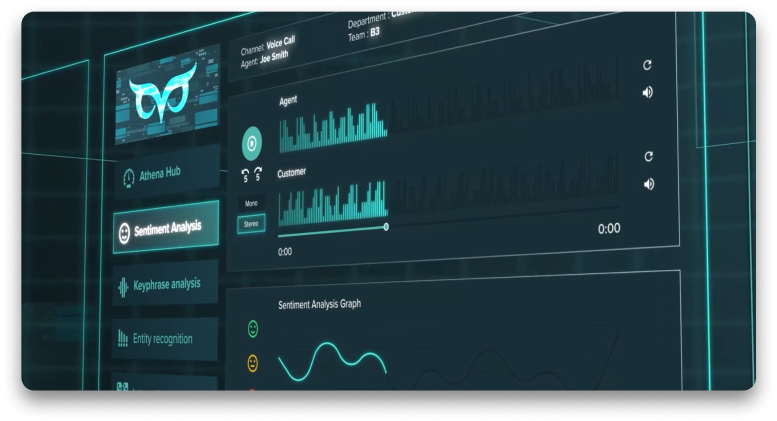Workforce Optimization
In response to heightened customer expectations, businesses must prioritize delivering personalized experiences. Achieving this requires implementing workforce optimization strategies. Workforce optimization is aimed at enhancing organizational and employee efficiency to reduce operational expenses. It strives to harmonize employee productivity, operational effectiveness, and job satisfaction to achieve business objectives.
In this article we’ll tell you everything there is to know about Workforce Optimization, from what it is to popular approaches or how you can leverage Workforce Management software to achieve your Workforce Optimization goals.
What is Workforce Optimization?
Workforce optimization (WFO) encompasses a range of strategies and practices aimed at enhancing both employee and organizational efficiency while reducing operational costs through data utilization. Its overarching objective is to drive organizational success by optimizing every facet of the business, spanning from marketing to finance. The aim is to streamline processes across departments and individuals to maximize outcomes.
This increasingly embraced approach transcends conventional human resources management, encompassing practices like staffing optimization, talent acquisition, performance management, and fostering employee engagement.
When fully integrated, WFO delivers cost reductions, improved operational efficiency, heightened productivity, maximized technology utilization, enhanced customer service, process automation, error reduction, and comprehensive insights into all aspects of the organization.
Benefits of Workforce Optimization
Enhanced Productivity
Instead of relying on costly training programs to enhance your workforce’s skills, Workforce Optimization (WFO) enables employees to leverage their existing skills more efficiently. This not only bypasses unnecessary training but also empowers employees to utilize their skills in a manner that benefits the entire company. Demonstrating trust and commitment to their personal development significantly contributes to a contented workforce.
Minimized Errors
Efficient operations are error-free operations. When employees are not overwhelmed or distracted, they are less prone to overlooking details that could lead to significant issues later on. While human error is inevitable, the process of workforce optimization aims to identify and rectify time-consuming and stressful errors that were causing problems initially.
Cost Control
A fundamental aspect of workforce optimization involves eliminating superfluous elements from all areas of your company. This often pertains to staffing— an optimized workforce doesn’t require additional employees, but rather ones who work smarter and more effectively. Additionally, there are other cost considerations, such as savings achieved through the implementation of automation during the workday.
Enhanced Customer Relationships
Following the optimization of their typical work processes for maximum efficiency, employees can deliver higher-quality customer service more swiftly. WFO streamlines the workflow by eliminating unnecessary or ineffective steps and barriers that hinder your workforce’s performance. This enables quicker delivery of your products or services and allows for prompt responses to any issues that arise.
These benefits extend beyond employees in customer-facing roles such as sales or client relations. From marketing to HR, the advantages of workforce optimization ultimately influence interactions with clients and customers by simplifying the tasks of those employees.
New Advancement Opportunities for Employees
Employees operating at their peak performance have a greater likelihood of advancing within the company. Moreover, with fewer obstacles impeding their performance, you gain a clearer understanding of the skills they lack. The company can save resources by investing in specialized training for specific workers rather than employing general development methods. Supporting the professional growth of your team not only boosts employee engagement but also ensures customers receive the finest service possible.
Workforce Optimization Software Features
Workforce Optimization (WFO) software is a comprehensive solution designed to enhance various facets of workplace productivity. For instance, it effectively analyzes business needs by considering factors such as employee count, peak periods, availability, budget constraints, skills, labor regulations, and contractual obligations. Using this information, the software can then analyze, schedule, forecast, and optimize workforce operations accordingly.
Scheduling and Calendar
Wth scheduling and calendar functions, managers can easily create, adjust, and oversee employee schedules, while real-time visibility keeps both managers and employees informed about shifts, tasks, and responsibilities. Features like shift swapping and time-off requests offer flexibility, with automated notifications ensuring timely communication.
Shift Tracking
Shift Tracking enables employee monitoring in real-time with shift tracking features, enabling proactive management and quick adjustments to meet business goals. Identify areas for improvement and recognize outstanding performance through continuous observation.
Overtime Management
Overtime Management allows managers to receive alerts for impending overtime and unauthorized work hours, allowing fair distribution and avoiding unnecessary payroll expenses.
Performance Analytics
Performance analytics empowers businesses to maximize productivity and identify strengths and weaknesses, measuring individual and team efficiency and providing insights for targeted optimization. Customizable Key Performance Indicators (KPIs) align with specific goals, while Sentiment Analysis AI enhances customer interactions by detecting emotional tones and attitudes in real-time.
Labour Forecasting
Strategic labour forecasting can allow managers to align workforce with dynamic business demands, predicting future workload trends for proactive decision-making. Anticipate staffing needs accurately to maintain optimal levels, enhance adaptability, and optimize budgeting and resource allocation based on future requirements, ensuring budget control and maximizing productivity.
Gamification
Gamification is vital for maintaining agent motivation and retention in a contact center. It incorporates game-like features such as rewards, achievements, and leaderboards, fostering healthy competition among teams and boosting agent morale. By leveraging gamification, staff members are encouraged to provide exceptional customer service driven by the thrill of rewards and their standings on leaderboards. This heightened motivation leads to increased productivity and, importantly, elevated levels of customer satisfaction and loyalty.
Workforce Optimization Strategies
Adopt a customer-centric approach
The objective of workforce optimization is to deliver optimal customer service efficiently. While reducing the number of employees per shift may cut costs, it could also compromise customer service quality. Always consider the impact on customers and heed external data trends.
For example, a Gartner study predicts a 41% decline in phone-based customer interactions, suggesting a shift toward mediums like instant messaging and web chat. Organizations should adapt accordingly.
Provide employees with necessary tools and resources
Empower workers by equipping them with tools such as knowledge banks and gamification resources to enhance their effectiveness. For instance, if instant messaging queries are expected to rise, provide relevant training to customer service agents.
Match skills to tasks
Identify employees’ skills using tools like skills inventory and taxonomy, matching them to specific tasks. This boosts engagement when employees can utilize their skills effectively.
Utilize scheduling tools
Employ scheduling tools like Connex One to manage customer demand while optimizing employee time, reducing inefficiencies, overtime costs, and burnout.
Set achievable goals
Leverage insights from WFO for setting realistic performance standards. For example, if analysis indicates an average of seven customer calls per hour in a contact center, establish this as the expected standard. Consider factors like difficult customer interactions and lunch breaks, maintaining an agile approach to goal-setting.
If you enjoyed reading this, you might also be interested in…
Customer Service AI
Conversational AI
Contact Center Artificial Intelligence
AI Based Call Centre


